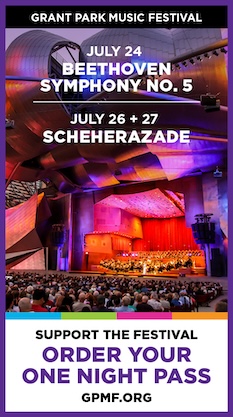Dover Quartet brings humor, passion, and tranquility to an E-flat evening

Wednesday night’s concert at Galvin Recital Hall at Northwestern University was for E-flat major lovers. The Dover Quartet, the music school’s quartet-in-residence, played three pieces in that key by Haydn, Dvořák, and Mendelssohn.
Haydn’s contribution was his “Joke” Quartet, Op. 33, no. 2, where the Dover Quartet was admirable in the outer movements, but excellent in the middle ones. The exposition of the first movement was winningly sunny, but the development section needed more mystery and drama in its minor-key moments.
In the finale, the coda’s jokes were well-timed and the audience laughed out loud several times. But some of Haydn’s other opportunities for humor and contrast were underplayed. The sforzandi in the B section were not as emphatic nor the staccato passages in the C section as light as they are in the best performances.
In the Scherzo, however, the players missed no opportunities for characterization. The opening bars’ dynamics were effectively contrasted and first violinist Joel Link made the trio’s portamenti as comically oleaginous as possible.
The Largo, introduced by the quartet’s new violist Hezekiah Leung, showcased what would be the chief virtue of the evening: an intelligent and diverse treatment of vibrato in slow movements, tailored to the individual personality of any given theme or moment.
Cellist Camden Shaw prefaced Dvořák’s Quartet No. 10, “Slavonic,” with spoken remarks to remind the audience that the dumka genre (which includes the piece’s slow movement) originated in Ukraine. He also described the “tenderness” of the piece’s first three movements.
Tenderness was definitely the central quality of the quartet’s playing, which was highly lyrical, without being sentimental.
These three movements felt notably subdued—with the dance episodes coming across as bucolic rather than boisterous. This all might have seemed too subdued, but as an island of tranquility floating between the energy of Haydn and Mendelssohn, it worked. And their rambunctious reading of the finale ensured the concert’s first half closed with a jolt of energy.
The Dover Quartet’s finest performance of the night came with Mendelssohn’s Quartet Op. 44, no. 3. His quartets have had a welcome resurgence in the past decade or so, in part because players have shed their prissy image of him, and learned to treat his music as ardent expressions of Romanticism.
The Dover Quartet’s performance was no exception to this trend. The outer movements bounded with passion, with forte playing that was forceful without being violent, and with vigorous passagework that never seemed motoric.
The only minor letdown was the quartet’s continued refusal to play truly short staccatos, which are needed to give the scherzo’s opening its sense of mischief. But as soon as the scherzo turned menacing, the quartet produced the needed bite.
Again, the slow movement proved a highlight. The score is littered with sforzandi, sudden crescendi, and fortissimo episodes. In the Dover Quartet’s hands, these passages were rich and choir-like, and never strained.
Posted in Uncategorized
